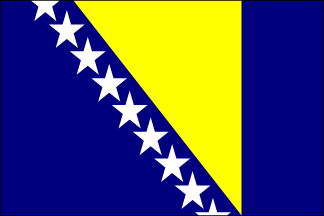
Overview
Bosnia and Herzegovina is a country situated in South-Eastern Europe, on the Balkan Peninsula. Bosnia is bordered by Croatia to the north, west and south, Serbia to the east, and Montenegro to the southeast, Bosnia and Herzegovina is nearly landlocked, controlling only 26 kilometers of the coastline of the Adriatic Sea.
Bosnia and Herzegovina contains three ethnic groups. These are groups are Bosniaks, which is the largest population, with Serbs in second and Croats in third. A citizen of Bosnia and Herzegovina no matter the background is most time just known in English as either Bosnian or Herzegovinian. Bosnian and Herzegovinian are used to describe a regional delineation instead of an ethnic distinction. Bosnia and Herzegovina remains politically decentralized, comprising two entities, the Federation of Bosnia and Herzegovina and Republika Srpska, with a third region, the Br?ko District being administered by both.
Bosnia and Herzegovina gained its independence as an outcome of the Yugoslav wars of the 1990s. Bosnia and Herzegovina is fashioned as a parliamentary democracy that is moving its economy towards a market-oriented system. It is a potential candidate for joining the European Union and has been a candidate for NATO membership since April 2010. In addition to the above Bosnia and Herzegovina has been a member of the Council of Europe since 24 April 2002 and a founding member of the Mediterranean Union upon its establishment on 13 July 2008.
Finance Information
Central Bank of Bosnia and Herzegovina
Bank Governor: Kemal Kozaric
